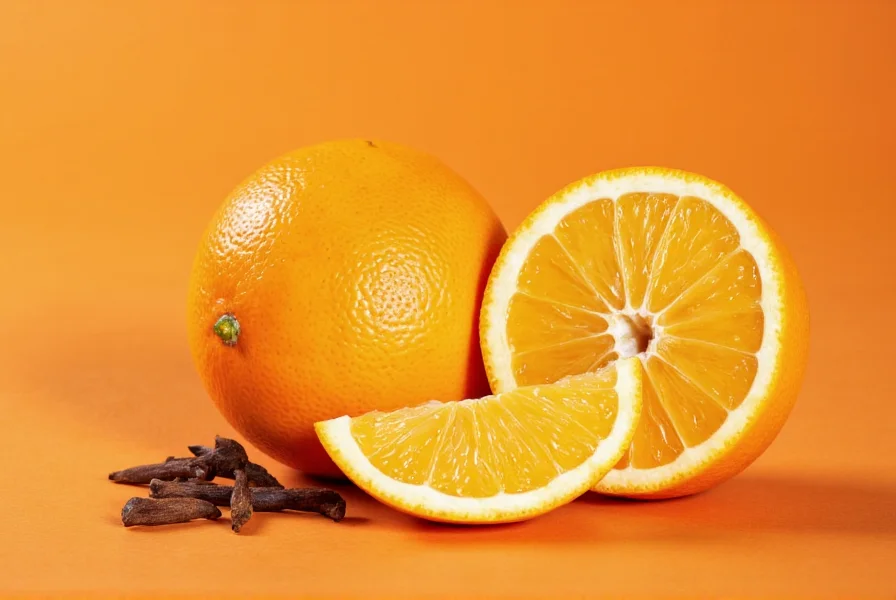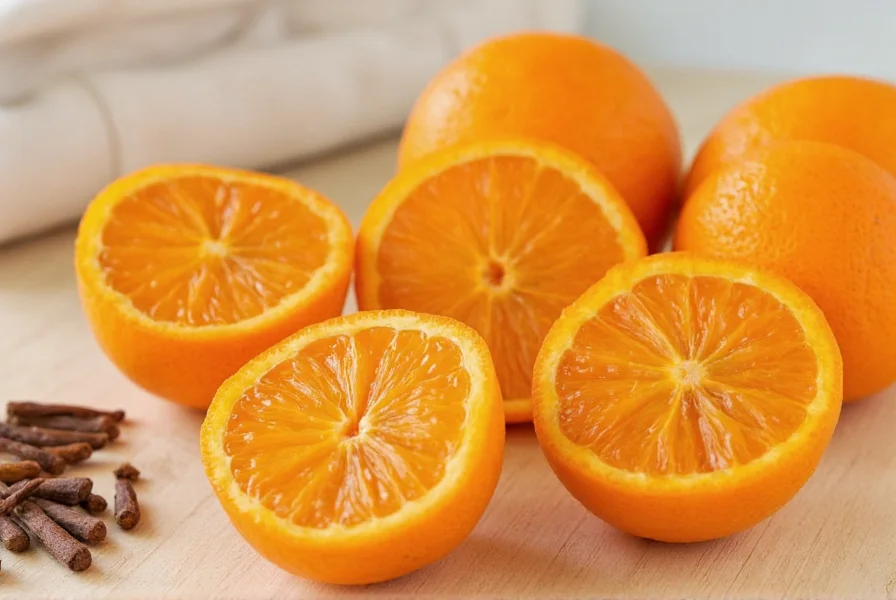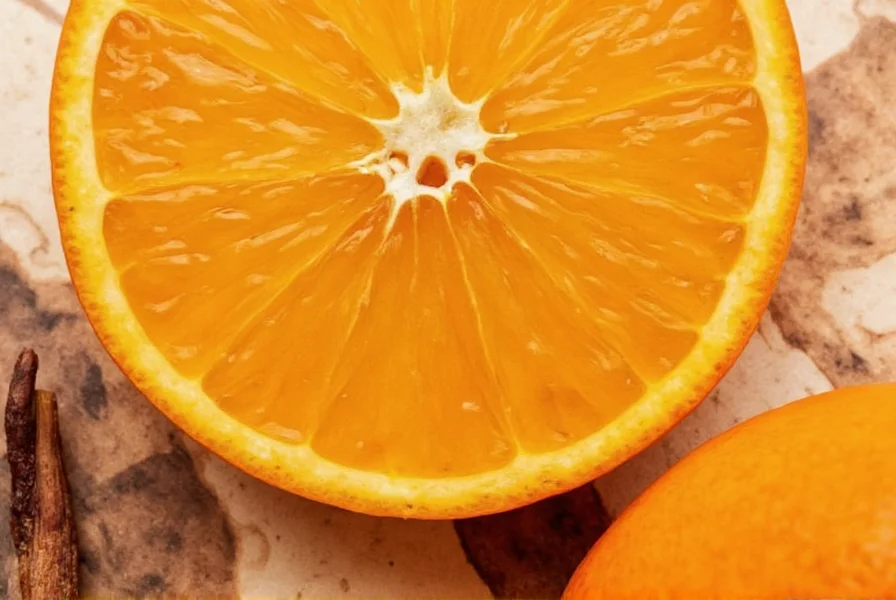The Rich History of Orange with Cloves Traditions
The practice of creating pomanders (from the French "pomme d'ambre," meaning apple of amber) dates back to the 16th century when people carried these fragrant balls to ward off illness during plague outbreaks. Wealthy Europeans originally used precious materials like gold and ambergris, but the more accessible orange and cloves version became popular among common people.
During the Victorian era, clove-studded oranges evolved into holiday traditions, particularly around Christmas. Families would gather to create these fragrant decorations, often hanging them on Christmas trees or placing them in bowls around the home. In some cultures, particularly in the southern United States, pomanders became associated with Thanksgiving and autumn celebrations.
Today, this simple craft continues to be appreciated for its natural fragrance, eco-friendly qualities, and connection to historical traditions. Unlike synthetic air fresheners, an orange studded with cloves provides a chemical-free way to scent your home while reducing food waste by using citrus that might otherwise be discarded.
Materials Needed for Creating Your Own Orange with Cloves
Creating a high-quality pomander requires just a few simple materials, but selecting the right components makes a significant difference in both appearance and longevity:
| Material | Recommended Type | Why It Matters |
|---|---|---|
| Orange | Firm navel or blood orange | Firmer oranges hold cloves better and dry more evenly |
| Cloves | Whole, unbroken cloves | Broken cloves won't insert properly and lose fragrance faster |
| Optional Additions | Ribbon, cinnamon sticks, essential oils | Enhances visual appeal and fragrance profile |
| Drying Surface | Wire rack or parchment paper | Allows air circulation during drying process |
Avoid using overly ripe oranges, as they'll become mushy when handling. Similarly, ensure your cloves are fresh and aromatic—stale cloves won't provide the characteristic warm spice fragrance that defines this traditional craft.
Step-by-Step Guide to Making Orange with Cloves
Creating your own clove-studded orange requires patience and attention to detail. Follow these steps for the best results:
- Prepare your workspace - Cover your surface with newspaper or parchment paper to catch any juice
- Wash and dry the orange - Use room temperature water to clean the orange, then pat thoroughly dry
- Plan your pattern - Lightly mark a design with a toothpick if desired (spirals, geometric patterns, or holiday shapes)
- Insert cloves - Hold the orange firmly and press cloves into the peel at a slight angle, spacing them about 1/4 inch apart
- Work systematically - Complete one section at a time to maintain even spacing and coverage
- Dry the pomander - Place on a wire rack in a cool, dark, well-ventilated area for 3-4 weeks
- Rotate regularly - Turn the orange every few days to ensure even drying
- Store properly - Once fully dried (when it feels light and firm), store in a breathable container
For best results when inserting cloves, use a toothpick to make a small pilot hole first. This prevents the orange from splitting and makes the clove insertion process smoother. The tighter the clove pattern, the stronger the fragrance will be once dried.

Creative Variations for Orange with Cloves Decorations
While the traditional pomander is beautiful on its own, several creative variations can enhance both appearance and fragrance:
- Spice blends - Combine cloves with cinnamon sticks, allspice berries, or star anise for complex fragrance profiles
- Essential oil enhancement - After drying, lightly mist with complementary essential oils like vanilla or sandalwood
- Seasonal adaptations - Create heart shapes for Valentine's Day or pumpkin shapes for autumn using appropriate citrus
- Gift presentation - Wrap dried pomanders in decorative tissue paper with ribbon for thoughtful handmade gifts
- Display methods - Hang from ribbons as ornaments, place in decorative bowls, or arrange in wreaths
For holiday celebrations, consider creating pomanders in traditional Christmas colors by adding red ribbon or incorporating small pinecones. During Thanksgiving, pair your orange with cloves creation with dried corn husks or miniature gourds for a seasonal centerpiece.
Practical Applications and Benefits of Orange with Cloves
Beyond their visual appeal, clove-studded oranges offer several practical benefits that make them worth creating:
As a natural air freshener, the combination of citrus oils from the orange and eugenol from cloves creates a long-lasting fragrance that's far superior to many commercial products. Unlike synthetic air fresheners that can contain potentially harmful chemicals, this natural alternative provides a safe way to scent your home, particularly important for those with sensitivities or respiratory concerns.
The antimicrobial properties of both citrus and cloves make orange with cloves pomanders effective at reducing airborne bacteria in enclosed spaces. While not a substitute for proper cleaning, they can complement your home hygiene routine, especially during cold and flu season.
When placed in clothing drawers or storage containers, dried pomanders serve as a natural moth repellent, protecting fabrics without the harsh chemicals found in traditional mothballs. The citrus and clove scent deters insects while leaving clothes with a pleasant fragrance.
From an environmental perspective, creating orange with cloves decorations represents sustainable crafting at its finest. You're repurposing citrus that might otherwise be discarded, using natural materials that fully biodegrade, and avoiding the plastic waste associated with many commercial decorations.

Troubleshooting Common Orange with Cloves Issues
Even experienced crafters encounter challenges when making pomanders. Here's how to address common problems:
Mold Prevention
If your orange begins to develop mold during the drying process, this typically indicates insufficient air circulation or excessive moisture. Immediately remove any moldy spots with a clean cloth dampened with white vinegar, then increase ventilation around your pomander. Placing it near a fan (not directly in the airflow) can help speed drying without causing uneven shrinkage.
Uneven Drying
When one side of your orange with cloves dries faster than others, it can lead to cracking or splitting. To prevent this, rotate your pomander daily and ensure it's not placed near direct heat sources. If cracking occurs, the pomander remains functional but may have reduced shelf life.
Fragrance Fade
Over time, even properly dried pomanders will gradually lose their scent. To refresh the fragrance, lightly mist with a solution of water and complementary essential oil (5-10 drops per ounce of water). Avoid saturating the pomander, as excess moisture can promote mold growth.
Scientific Perspective on Orange with Cloves
The enduring popularity of orange studded with cloves isn't just tradition—it's supported by science. Citrus peels contain limonene, a compound responsible for their characteristic scent and known for its mood-enhancing properties. Cloves contain eugenol, which has both antimicrobial and analgesic properties.
When combined in a pomander, these natural compounds create a synergistic effect. As the orange dries, the essential oils become more concentrated, while the cloves continue to release their fragrance. This explains why properly made pomanders often smell stronger after several weeks of drying than when first created.
Research on aromatherapy suggests that the combination of citrus and spice scents can reduce stress and improve mood. While a pomander shouldn't replace professional medical treatment, having these natural fragrances in your environment may contribute to a more pleasant and calming atmosphere.
Caring for Your Finished Orange with Cloves Pomander
Proper care extends the life of your pomander significantly. Store dried pomanders in a cool, dark place when not in use, preferably in a breathable container like a linen bag or cardboard box. Avoid plastic containers, which can trap moisture and promote mold.
During periods of high humidity, you may notice your pomander absorbing moisture and becoming slightly soft. Simply place it in a well-ventilated area for a few days to re-dry. If the fragrance diminishes, the light essential oil mist mentioned earlier can refresh it without damaging the pomander.
With proper care, a well-made orange studded with cloves can remain fragrant for 6-12 months, making it a long-lasting decoration that provides ongoing value beyond the initial crafting effort.
How long does it take to dry an orange studded with cloves?
A properly made pomander typically requires 3-4 weeks to dry completely. The drying time depends on humidity levels, orange thickness, and clove density. You'll know it's fully dried when the orange feels light, firm, and no longer releases juice when gently pressed.
Can I use other fruits besides oranges for clove pomanders?
Yes, while oranges are traditional, you can use lemons, limes, or even apples. Citrus fruits work best due to their high oil content in the peel, which enhances fragrance. Apples can be used but require more preparation to prevent browning and may not last as long as citrus pomanders.
Why does my orange with cloves pomander smell stronger after drying?
As the orange dries, the essential oils in both the citrus peel and cloves become more concentrated. The drying process also causes microscopic cracks in the peel, allowing more fragrance to be released. This concentration effect means properly dried pomanders often have a stronger scent than when first created.
How can I prevent my clove-studded orange from molding?
To prevent mold, ensure good air circulation during drying by using a wire rack instead of a solid surface. Avoid direct sunlight, which can cause uneven drying. If mold appears, gently wipe affected areas with a cloth dampened with white vinegar, then increase ventilation. Starting with a thoroughly dried orange before inserting cloves also helps prevent mold.
What's the best way to store dried pomanders when not in use?
Store dried pomanders in a cool, dark place in breathable containers like linen bags or cardboard boxes. Avoid plastic containers that trap moisture. For long-term storage, place them with silica gel packets to absorb excess humidity. Properly stored pomanders can remain fragrant for 6-12 months before needing fragrance refreshment.











 浙公网安备
33010002000092号
浙公网安备
33010002000092号 浙B2-20120091-4
浙B2-20120091-4